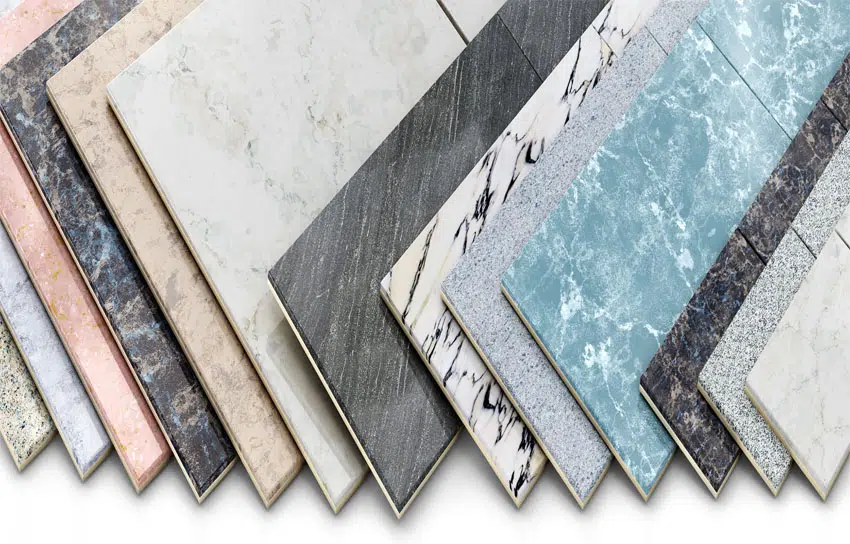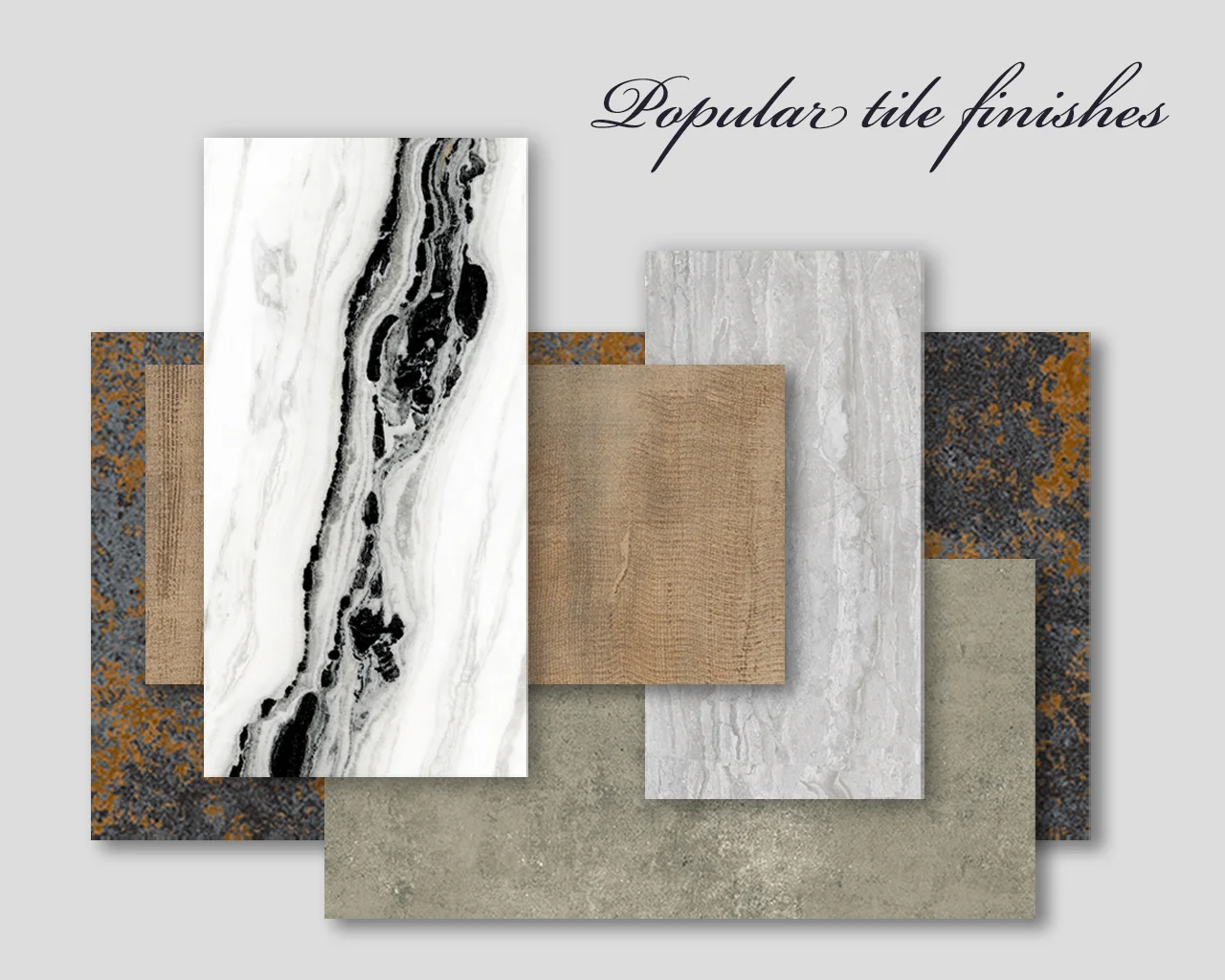17 June, 2025

Tiles are not only building materials; they determine the beauty, functionality, and comfort of your space. Nevertheless, a lot of homeowners and designers appear on the losing end without the selected tile size and finish, experiencing dissatisfaction, increased maintenance, and expensive replacement. Be it the remodeling of a comfortable bathroom or the planning of a posh living room, you ought to comprehend the right way of choosing the ideal tiles. With the assistance of this guide, you will be able to escape the tile choice errors that the majority of individuals make to end up with a place that is astonishing and functional.
Why Does Tile Size Matter So Much?
The size of the tile contributes greatly to the way the room appears, performs, and comes to be. Of such tiles in large formats, fewer grout lines will make a small room seem bigger, as the eye will have the perception of continuity. Smaller tiles, on the other hand, are best used on detailed work such as kitchen backsplashes, shower floors, or accent walls where curves or edges have to be mitigated.
Key Points to Consider

Consider Room Size
And one of the most common errors that a homeowner can commit is to ignore the size of the room prior to choosing tiles. In a small bathroom, large tiles will overpower the room and make it look smaller and untidy.
On the other hand, small tiles in a big room may give a busy and fragmented appearance, which will ruin the harmony of the design. The trick here is to custom-make your tile size relative to the room size so that it looks balanced and nice to the eyes.
Bigger tiles, such as 600x1200 mm or 800x1600 mm, make an impression of a seamless, modern atmosphere in large rooms (living rooms, open kitchens, etc.). Mosaics or subway-style tiles are small and thus fit well in small rooms such as powder rooms or laundries.
Large Tiles for Spacious Rooms
Large-format tiles can also be used in bigger bathrooms or open spaces to give the room a sleek, modern appearance as well as give the illusion of a larger space. They minimize grout lines, which is a factor in achieving a cleaner look and low maintenance. But, make sure that the tile size can be delivered and installed, in case of an old building with limited stairways or an elevator.
Small Tiles for Detailed Patterns
Small tiles are ideal when one wants to use them to form complicated patterns or mosaic appearances; however, small tiles use more grout, and they are harder to maintain. Use them in small places such as shower floors, where slip resistance is a major concern, but not in big open spaces, where they will look untidy.
Grout Lines
Large tiles with fewer grout lines provide a clean, continuous appearance that limits the amount of dirt that can accumulate and makes cleaning easy. Small tiles, though, are more travertine and can better conceal irregular surfaces.
How to Choose the Right Tile Finish for Your Space?
Choosing the right tile finish can transform your space's safety, ease of cleaning, and overall ambiance. Each finish type not only contributes to the visual appeal but also affects daily usage, especially in areas exposed to moisture or heavy footfall. Common Tile Finishes:

Matt vs. Glossy
The tile finishes influence the appearance and the performance of your area. Gloss tiles are shiny and classy and have the capacity to reflect light, thus illuminating rooms. They are famous in the living rooms and other places that are not so moisture-laden. Nonetheless, gloss tiles are slippery when they are wet, thus not very appropriate in bathrooms and kitchens.
Matt tiles are, however, non-reflective and offer greater slip resistance. They suit perfectly in places of wet use as they are safe and do not miss out on style. The matt finish also conceals water marks and dirt as compared to the glossy tiles, hence requiring less cleaning.
Textured and Polished Finishes
Textured tiles are depth and slip resistant, thus ideal in outdoor areas or in places that are likely to get wet. High-gloss tiles are polished and show color and pattern to their best advantage, but need greater care to maintain the shine. The selection of the appropriate finish varies with the room's purpose and your lifestyle choice
It is important to remember that an improper tile finish may ruin the aesthetic and the effectiveness of your area, thus matching your selection with the intended use of the room.
What Happens When You Pick the Wrong Tile Size and Finish?
The wrong tile size and finish may seem an aesthetic issue only, but it can affect the safety and maintenance of the room as well. In small areas, large tiles may dominate the place and make it appear busy or disproportionate.
Possible Consequences:
-
Visually Unbalanced Space: Large tiles in a small bathroom may look forced and reduce perceived room height, while tiny tiles in a grand hall may appear busy and fragmented.
-
Safety Risks: A glossy tile on a bathroom or kitchen floor becomes dangerously slippery when wet, increasing accident risks, especially in homes with kids or elderly residents.
-
Difficult Maintenance: Highly textured finishes, though beautiful, can trap dirt, grease, and soap residue, making cleaning laborious something to avoid in kitchens or high-traffic areas.
-
Reduced Property Value: Poor tile choices can make the property less attractive to potential buyers, negatively impacting resale value or rental appeal.
Tips to Avoid Choosing the Wrong Tile Size and Finish

1. Ignoring Slip Resistance
There should be no compromise on safety, particularly in bathrooms and kitchens where floors get frequently wet. The choice of tiles that are not selected based on slip resistance rating may cause accidents. When selecting tiles, always use those that have suitable anti-slip qualities in wet areas.
2. Overlooking Maintenance Requirements
Certain tiles require more maintenance as compared to others. Porcelain and ceramic tiles are due to their durability and low maintenance. In busy places, do not use tiles that require a lot of maintenance because they will consume time and money on cleaning and fixing.
3. Neglecting Water Resistance
The environments with high moisture are bathrooms and kitchens. Selecting non-water-resistant tiles may lead to mould and mildew as well as grout damage. Make sure that your tiles are suited to resist humidity, and look into waterproof membranes during installation to be on the safer side.
4. Disregarding Grout Color and Size
The grout lines affect the general appearance of your tiled surface. A grout color that is too contrasting with your tiles may also cause disruption to the flow. Likewise, the size of grout lines influences the appearance; small grout lines give a continuous appearance, whereas broad grout lines may be utilized to accentuate a tile design. Select a grout color and size that will match your tile selection.
5. Not Considering Lighting
The tile colors and finishes are altered by lighting. The tile shade and texture can be changed by natural and artificial light. To eliminate surprises, test tile samples in your lighting conditions before you buy.
6. Following Trends Blindly
It might be tempting to select the tiles according to the existing trends, but it would be much smarter to select the styles and colors according to your taste and the overall design of the home. Fashionable tiles can soon go out of fashion, but traditional options will always be attractive.
7. Rushing the Decision
The choice of the tiles must be intentional. Research, compare, and visualize: take your time to do all of that when choosing and designing with tiles. The from-the-cuff decisions can be pretty regretful and expensive to replace.
8. Skipping Professional Advice
What can be expensive mistakes to avoid are tile specialists' or interior designers' consultations. The professionals would be able to advise you on the tile life you are about to use, the suitability of the finish to be used, the installation methods, and tips on maintenance based on your project.
Practical Tips for Perfect Tile Selection
-
Order Samples: Always request tile samples to see how they look in your space under different lighting conditions. This helps you evaluate color, texture, and finish accurately.
-
Check Delivery Feasibility: Confirm that tile sizes can be delivered to your site, especially if you live in an older building with limited access.
-
Buy Extra Tiles: Order at least 10% more tiles than needed to cover breakage, cuts, and future repairs. Running out mid-project causes delays and extra costs.
-
Consider Layout Patterns: The way tiles are laid out affects the room’s visual flow. Discuss layout options like diagonal, herringbone, or straight patterns with your installer or designer.
-
Match Tiles to Room Function: Use durable, water-resistant tiles for bathrooms and kitchens. For living areas, you can choose more decorative finishes that may not be suitable for wet zones
Why Choose Alaska Surfaces for Your Tile Needs?
Alaska Surfaces is one of the most reliable companies when it comes to the determination of the ideal tile size and finish. Featuring 30+ different tile collections and 15+ unique tile surfaces. With Alaska Surfaces, the choices are staggering, with options to match all designs and functionality needs. Need some inspiration to complete your sparkling contemporary interiors, or want some high-performance surfaces to withstand the heavy-footfall traffic? Here you will find the unparalleled variety and quality. Their collections are well-thought-out and organized by category, making it simple enough for homeowners, architects, and designers to find the ideal tile that embodies their vision, is durable, and stylish.
Conclusion
Selecting tile size and finish is a crucial part of designing a lovely, functional, and safe area. Do not hurry up with this choice, evaluate the purpose of your room, its size, light conditions, and everyday usage needs. Despite the type of finish you desire, be it a glossy finished luxury living room or a slip-resistant matt finished bathroom, a considerate choice will keep your tiles adding style as well as functionality to your interiors even after many years.
FAQs
1. How do I choose the right tile size for my room?
The tile size should complement the room dimensions. Larger tiles work best in open and spacious areas to create a seamless look, while smaller tiles are ideal for compact spaces or areas with a lot of corners and detailing.
2. What are the common mistakes when selecting tile finishes?
One major mistake is ignoring the purpose of the space. Glossy tiles, for example, are slippery and unsuitable for wet floors, while matt finishes may dull the appearance in areas that need brightness. Always match finish with functionality.
3. Is bigger tile size always better for small rooms?
Not always. Large tiles can make a small room look bigger if used correctly, but they may also appear overwhelming in extremely tight spaces. Balance is key—sometimes medium-sized tiles provide a better proportion.
4. Which tile finish is best for living rooms?
For living rooms, both gloss and matt finishes work depending on the vibe you want. Gloss adds brightness and reflects light, while matt offers a cozy, understated elegance.
5. Can I mix different tile sizes and finishes in the same space?
Yes, you can mix sizes and finishes, but it should be done thoughtfully. For example, combining matt and gloss finishes can create visual interest, but too much contrast can make the space feel busy or disjointed.
6. Why is tile size important in flooring projects?
Tile size affects the perception of space, ease of installation, and maintenance. Large tiles cover more area with fewer joints, creating a seamless look, while small tiles provide more grip and intricate patterns.
7. What finish is best for bathroom flooring?
Matt or textured finishes are best for bathroom floors as they provide better slip resistance compared to gloss finishes, making the space safer, especially when wet.
8. Are glossy tiles harder to maintain than matt tiles?
Glossy tiles show water spots, smudges, and dirt more easily but are generally easier to wipe clean. Matt tiles hide marks better but may require deeper cleaning to remove ingrained dirt.